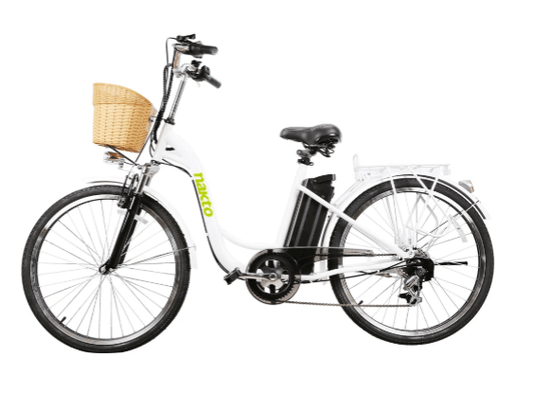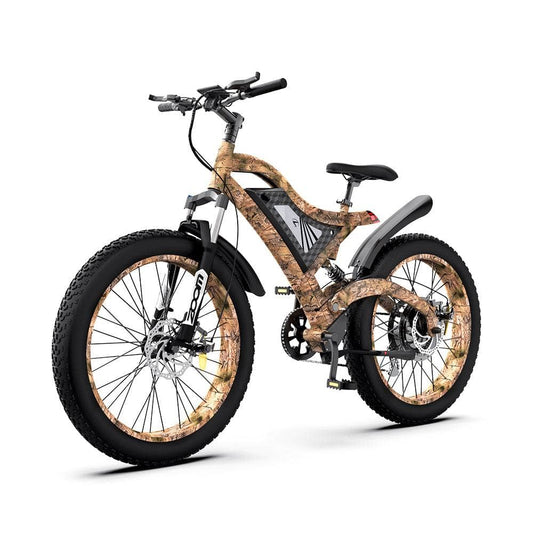Are you considering joining the ever-growing community of electric bike enthusiasts? As the popularity of e-bikes continues to soar, it's essential to make informed decisions before investing in this eco-friendly mode of transportation. To help you navigate the world of electric bikes with ease, we've put together a comprehensive guide that delves into three critical aspects: power, range, and energy efficiency.
Understanding these key elements will not only enable you to choose the perfect e-bike tailored to your needs, but also ensure a smooth and enjoyable riding experience. So, strap in and get ready to embark on a journey that will empower you to make the best choice when it comes to electric bikes, all while contributing to a greener and healthier planet.
Power
The power of e-Bikes may be difficult to understand for some because of the many terms to familiarize yourself with, such as amp hours, wattages, volts, and more. We’re here to make things simple for you.
An important thing to remember is that the battery doesn’t have anything to do with the power of your electric bike. That said, you don’t need a bigger battery to boost the power output of your electric bike. Remember, the battery is only about the range (which we will talk about later).
So, an electric bike’s power is dependent on two components: the motor and the controller. The controller delivers energy to your motor; then your motor will turn that energy into acceleration.
Now, the question is, how much power does an electric bike really need?

250 W
Consider this the lowest power for e-bikes today, while there are some that are available at 200 W. What can you get out of a 250 W of power? It’s ideal for cruising on flat land. It’s THE electric bike perfect for your errands or daily commutes.
However, it’s unreliable when it comes to hills, as it’s likely that the electric bike will struggle. In addition, a 250 W system on an electric bike is limited between 15 to 20 mph. Hitting speeds above that may already prove challenging for a 250W e-bike.
350 W to 500 W
350 W to 500 W electric bicycles, without question, can provide a significant boost in acceleration and will do a much better job on smaller hills. Additionally, 500 W is often the minimum power needed for an electric bike to go over 20 mph of speed. (Electrek, 2019)
750 W to 1,000 W
When it comes to POWER, you’ll feel it with electric bikes that have systems between 750 W and 1,000 W. Plus, anywhere between these power levels will give you an even better hill climbing performance. Thus, it’s perfect for individuals looking for electric bikes for trails and other outdoor activities.
Over 1,500 W
If you think you already have much power with e-bikes of 750 W to 1,000 W, then you will be surprised by what over 1,500 W can do for you. Undoubtedly, you will get an incredible performance like no other.
This power can reach a top speed of 40 to 43 miles per hour. Plus, the electric bike is loaded with more features but is undeniably costlier. Most 1500-watt pedal-assist electric bikes come with five modes of pedal assistance.
Range
The range of your e-bike is the maximum distance your bike can travel on a single charge. This is why we mentioned earlier in this post that this is where the size of your battery is vital. Aside from that, the surface that you will be riding on is also important in determining the appropriate e-bike range for you.

Currently, e-bikes can travel 300 to 400 kilometers on a single charge and are typically powered by 3kW batteries. To put it simply, the quality of the battery may be determined by how long the e-bike can travel between charges.
The lithium-ion battery of your e-bike has a lifecycle in which the battery won’t charge fully after around a thousand charge cycles for those who use it daily. Although the drop in capacity isn’t significant, less power will still be available for you.
However, that’s not all. Other external factors may impact the electric bike’s range.
Weight of Objects
Many electric bike riders root for light e-bikes, simply because they will require less power to move. Also, remember that there is a power-to-weight ratio you need to consider, especially on climbs, in which you, as the rider, will play a pivotal role. (The Pros Closet, 2022)
In addition, the heavier the bike is, the harder the motor should work and it will use more power. In turn, the range may be reduced. That’s why it’s important that you consider your weight and the load you plan to carry when choosing an e-bike.
Furthermore, your gear, tires, and pressure are mechanical factors that may also impact the range of your electric bicycle.
Terrain
Are you going to use the electric bike for different types of terrain? Or will you just be riding it on a flat road? The terrain where you will often use the e-bike is important. Again, when riding over hills or steep surfaces, your electric bike will use more power, which will impact the range of your e-bike.
Weather or Temperature
There’s nothing wrong with riding your electric bike in the winter or summer, but you need to be mindful of the effects. Usually, an e-bike can handle temperatures as low as 5 degrees Fahrenheit for riding, but the battery can’t charge at 32 degrees Fahrenheit. (SixThreeZero, 2022)
Furthermore, riding during the rainy season may also affect the range of your bike due to the wet roads, which will result in less grip. Hence, the e-bike must use more force to move forward.
The good news? You can increase your electric bicycle’s range. One thing is to minimize the level of support you get from it, such as adjusting the pedal assistance. Another thing you can do is to always ensure you recharge the battery after every use. This is because it has been found that lithium-ion batteries perform at their best when charged from 50 percent. (Battery University, 2010)
Energy
Energy in electric bikes is stored in its battery and then fed into the electric motor to generate power. Electric power is measured via watt-hours, which means the number of watts that can be delivered for an hour by the battery. A typical battery range is around 300 watt-hours to 1,000 WH.

Also, there is a thing called recuperation or energy recovery with e-bikes. This involves the energy that can be recovered with the help of your motor when braking your electric bike. However, most electric bikes don’t offer recuperation as only hub motors that are typically mounted on the rear hub can be configured for energy recovery.
Getting an electric bike today is easy in a way that there are many options you can choose from. However, understanding how it works, specifically the power, range, and energy will help you make an informed decision to ensure you get the right e-bike that will suit your needs.
Sources:
Toll, Micah. 2019. “How Much Power Does an Electric Bicycle Need? Here’s a Helpful Guide.” Electrek. June 6, 2019. https://electrek.co/2019/06/06/how-much-power-does-an-electric-bicycle-need/.
“Does Bike Weight Really Matter?” 2022. The Pro’s Closet. February 3, 2022. https://www.theproscloset.com/blogs/news/the-weight-equation-how-important-is-a-light-bike.
“Cold Weather and EBikes: Everything You Need to Know.” 2022. Www.sixthreezero.com. July 30, 2022. https://www.sixthreezero.com/blogs/bike-advice/cold-weather-and-ebikes-everything-you-need-to-know#:~:text=An%20electric%20bike%20can%20usually.
“BU-808: How to Prolong Lithium-Based Batteries.” 2010. Battery University. September 11, 2010. https://batteryuniversity.com/article/bu-808-how-to-prolong-lithium-based-batteries.


![Nakto Elegance 2 Electric City Bike [48V 22"]](http://journeybikes.com/cdn/shop/files/19.jpg?v=1739895302&width=533)
![X-Treme Newport Elite Beach Cruiser Electric Bike [24V 300W]](http://journeybikes.com/cdn/shop/products/x-treme-electric-bikes-one-size-metallic-blue-x-treme-newport-elite-24v-beach-cruiser-ebike-3607137910898.jpg?v=1572877629&width=533)

